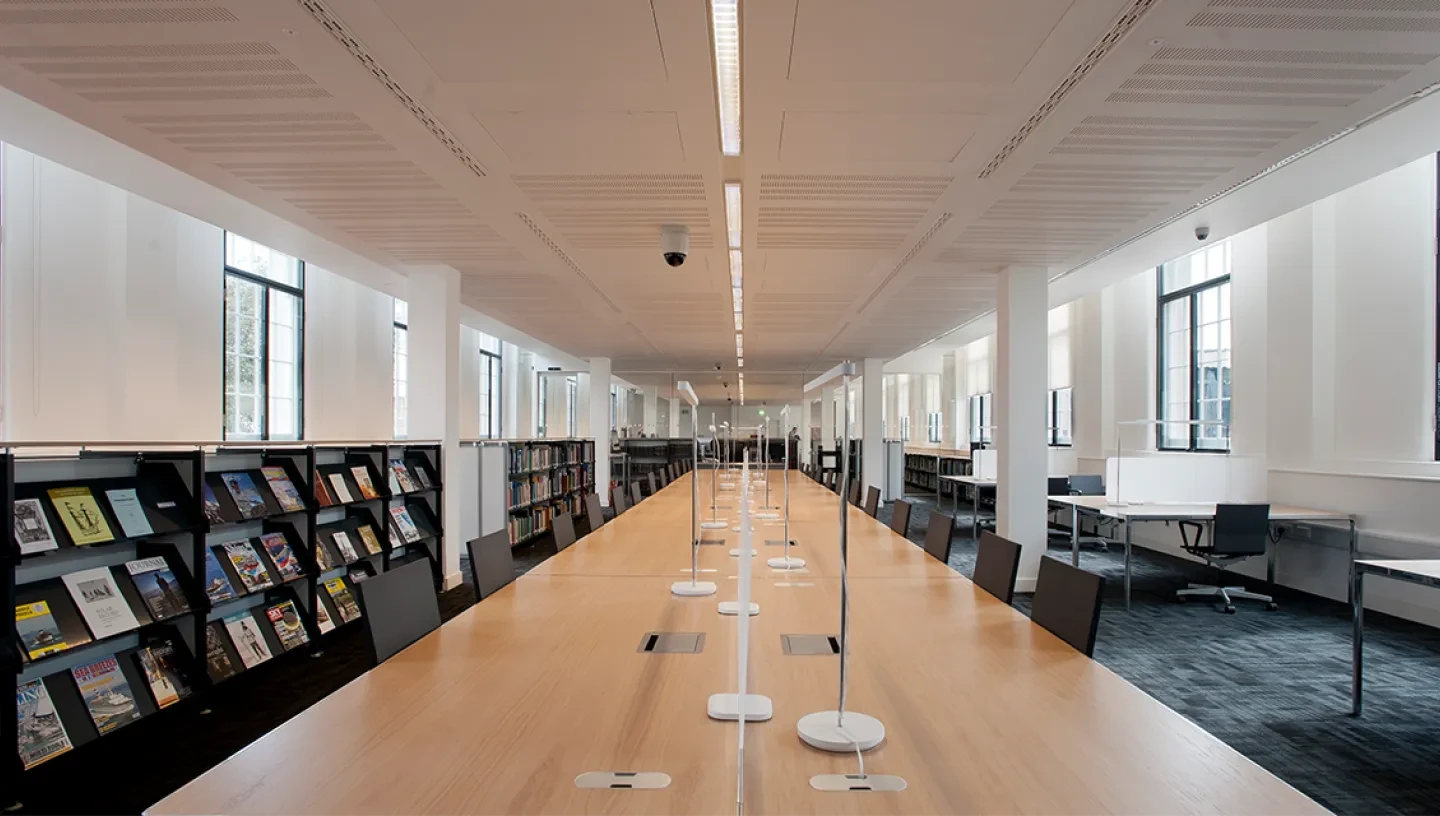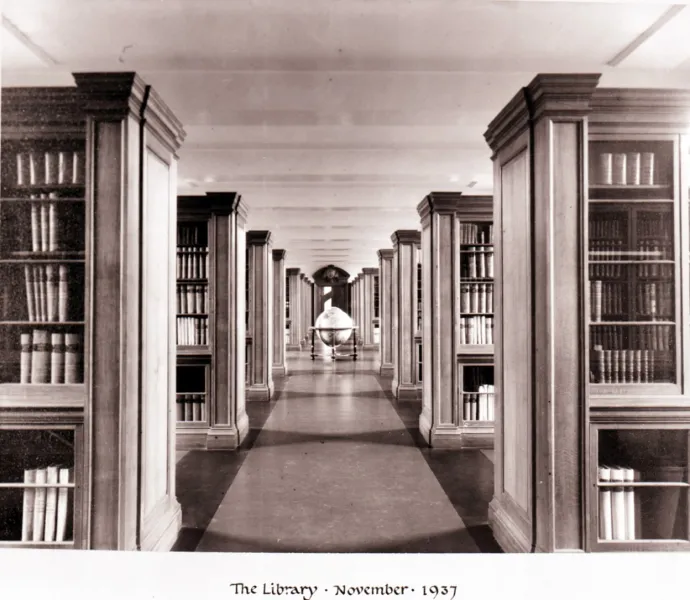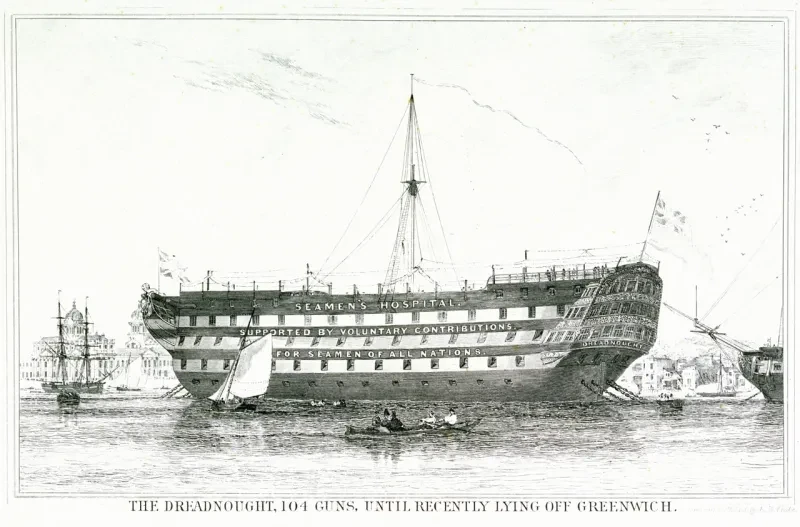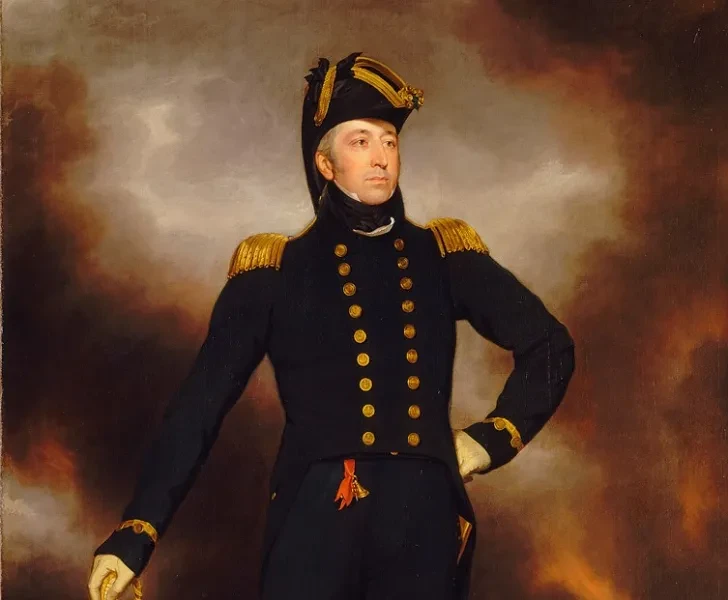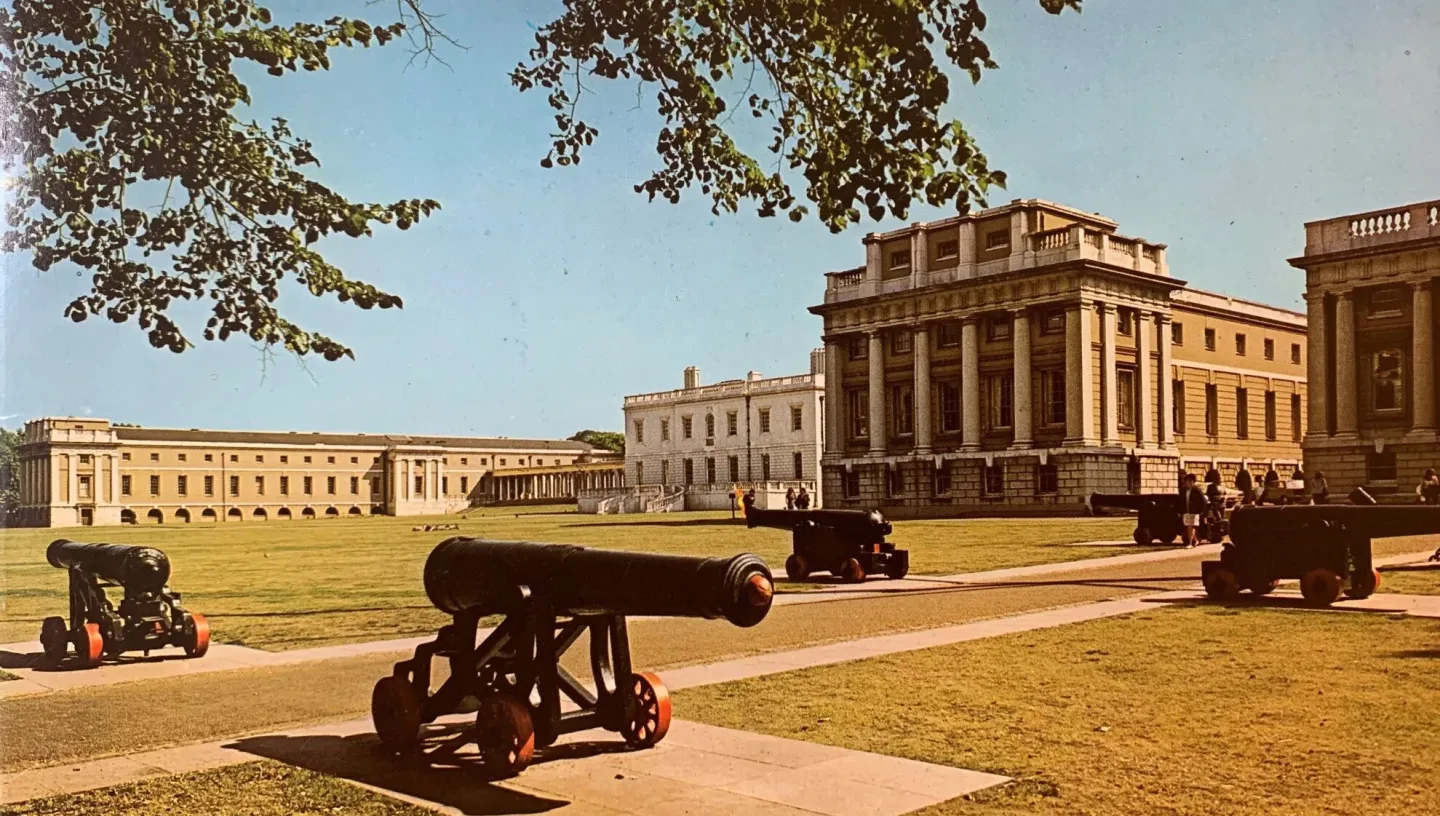
This blog explores the history of various large artefacts in the grounds of the National Maritime Museum and one in Greenwich Park
Have you ever given any thought to the history of the monuments and large objects in the grounds of the National Maritime Museum? This blog offers a brief guide to some of the treasures on display.
Statue of King William IV
The granite statue of King William IV (1765-1837) is the first statue that greets visitors when they enter the grounds of the Museum by the St Mary’s Gate entrance of Greenwich Park. It was made by Samuel Nixon (1804-1854) in 1844 and was originally located at King William Street near London Bridge.
In 1935, owing to changes in the road network as motor transport gradually replaced journeys by horse, the statue was moved to its current position in 'Maritime Greenwich'. This was a particularly fitting location given that William IV became known as the 'Sailor King' after having served in the Royal Navy for more than 10 years.
Weighing 20 tons of solid granite, the statue's relocation was undertaken by the specialist company Askham and Palin, Bridge and Steelwork Erectors of Fulham, just two years before the Museum was formally opened by King George VI in April 1937. Its move necessitated the demolition of St. Mary’s Church, which was built in 1825 to accommodate any overflow of worshippers from nearby St Alfege’s Church.
Carronades
To the east of the grounds and adjacent to the Museum's administration building, visitors will find two guns, a 12-pounder and a 32-pounder. These guns, known as carronades, face the Queen's House. Carronades were nicknamed “Smashers”. They were mounted in pairs at the ship’s forecastle, near the bow, and were very effective at close range. They fired canister shot, which consisted of a large quantity of lead or iron balls, encased in a metal cylinder. The shot would burst open on firing, discharging its contents and creating a tremendous amount of damage. The largest could fire a 68-pound solid iron shot.
Carronades were used to great effect during the Battle of Trafalgar. When Lord Nelson’s flagship HMS Victory fired its carronades into the stern of the Bucentaure, Admiral Villeneuve’s flagship, the shot swept through an entire gun deck. Nearly 200 French sailors were killed and scores of others were wounded. The scale of the damage inflicted just about put an end to the Bucentaure’s fighting ability.
Carronades were shorter than a conventional gun and required less gunpowder charge. The 32-pounder carronade was the only calibre of carronade still in use by the Royal Navy in the 1820s. During the 1970s and 1980s, six of these guns - two 24-pounders and four 32-pounders - were on display on the footpath leading to the Stanhope entrance of the Museum (see main image above). All six are now in storage.
Anchor Park
Not far from these carronades and situated at the Park Row end of the Museum's grounds is Anchor Park. This 'park' of anchors has been in situ for many years and can be easily missed by visitors, who generally enter the grounds from the western side of the grounds. The largest anchor in the park is from the Royal Yacht Victoria and Albert, which was launched in 1899 and scrapped in 1954.
Anchors are the most commonly encountered maritime relics on the seabed. With their barbed flukes, anchors were very prone to becoming embedded in the sea floor, making it impossible to raise them to the surface. When this happened, the only option was to sever the anchor chain, leave the anchor in the sea bed and replace it with another.
Anchor fouling was generally caused by the chain or rope becoming entangled around the stock or flukes, or by the anchor becoming lodged by an obstruction. Very large ships would often use several anchors to ensure the ship always had a means of being held fast.
Betty Nelson Curryer, a former World War Two Wren and National Maritime Museum staff member, has written a comprehensive book on the subject of anchors entitled Anchors: an Illustrated History, which is available at the Museum's Caird Library. Please see further details below.
Statues of Royal Navy officers
A short distance from the anchors, between the colonnades which link the three wings of the Museum are four marble statues of officers of the Royal Navy: Admiral Sir William Sidney Smith (1764-1840), Admiral Sir Edward Pellew, 1st Viscount Exmouth (1757-1833), Captain Sir William Peel (1824-1858) and Admiral James de Saumarez (1757-1836).
The Caird Library and Archive contains extensive documents and papers relating to Admiral Pellew and there is also material relating to Smith and de Saumarez. Pellew is possibly the most well-known figure, owing to his appearance in the fictional television series Hornblower (1998 to 2003). Pellew was played by the award-winning British actor Robert Lindsay. All four statues were made as national monuments to the sitters. They were originally located in the Royal Naval College's Painted Hall, opposite the National Maritime Museum.
Statue of General James Wolfe
Finally, a statue of General James Wolfe (1727-1759) is situated up the hill in Greenwich Park next to the Royal Observatory. It was created by the Canadian sculptor Robert Tait McKenzie. Cast in bronze, the statue was a gift from Canada. It was unveiled in 1930 by the Marquis of Montcalm, a descendant of Wolfe's adversary at the Battle of the Plains of Abraham in Quebec.
Wolfe joined the army in 1741 and rose to become one of England’s most celebrated military heroes of his time. He was killed at the Battle of the Plains of Abraham on 13 September 1759. The battle was part of the French and Indian War, the North American conflict in the larger imperial war between Great Britain and France known as the Seven Years' War (1756-1763).
His body was returned to England and interred in his family vault at St Alfege’s Church in Greenwich. The church holds one of the oil versions of Edward Penny RA's Death of Wolfe, while the Museum has a print of the more famous painting by Benjamin West depicting his death. A local primary school located a short distance from St Alfege’s Church has been named after him.
To find more about the items in this article, the following books are available at the Museum’s Caird Library:
